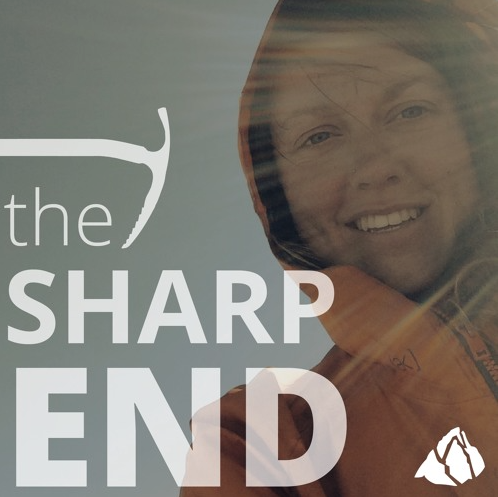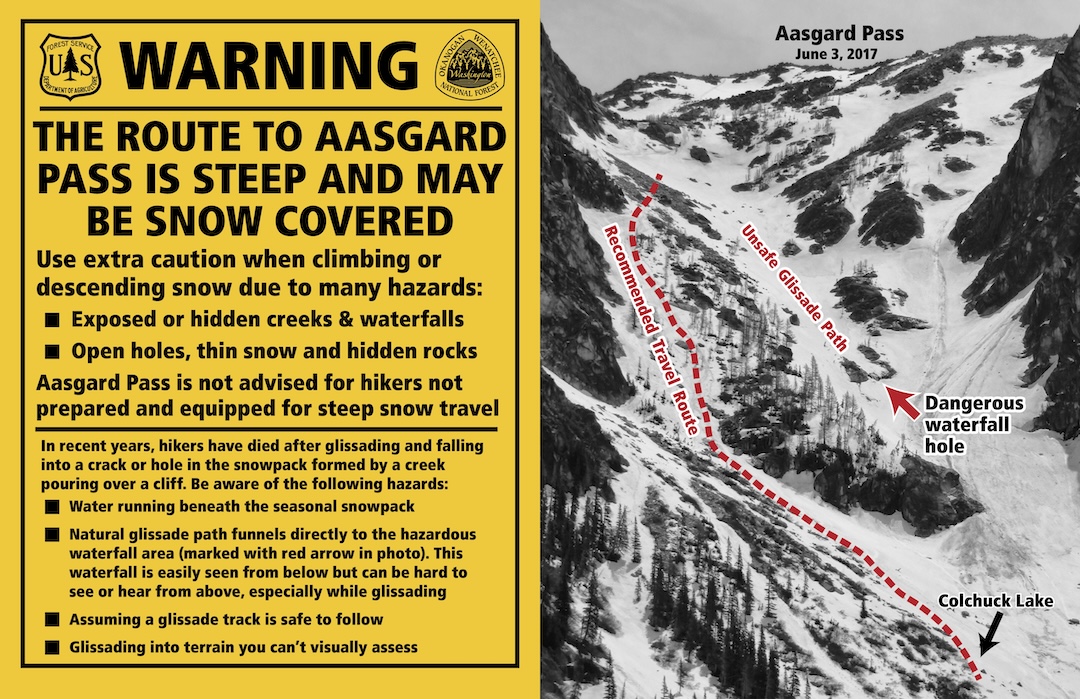Fall on Wet Rock and Snow
Washington, Stuart Range, Alpine Lakes Wilderness, Aasgard Pass
On June 7, Jessi (30) and Tyler (33) were on their way to five days of rock climbing in the Enchantment Lakes area. First, they had to cross Aasgard (a.k.a. Colchuck) Pass (7,841 feet).
Jessi wrote to ANAC:
It was early season and there would still be snow, so we practiced ice axe arrests and got beta from friends who had been in the area the week before. We knew there was one icy/sketchy section near the top of the pass. My pack was around 50 pounds. I am a slow hiker, so we had planned to take all day to get over the pass.
We were delayed over an hour administering first aid to a hiker near Colchuck Lake. Because of this, we started ascending the pass much later than planned. We reached the sketchy part at 6:35 p.m. We donned Microspikes and helmets and got our ice axes out.
The tricky section required a traverse of ten feet across 40° rock, covered with a thin layer of ice, and then a short step up. Below this section was a steep snowfield ending in jagged talus. Tyler was more experienced and went first. I saw one of his feet slip, but he recovered.
When it was my turn, I was anxious but never thought I would actually fall. My ice axe spike broke the thin ice off, exposing wet rock. My Microspikes did not stick well. I crossed slowly with small steps. I had to decide to either remove my spikes to grip the rock better or just keep going—I left my spikes on. I made sure to use my ice axe for stability, but in the same spot as Tyler, I slipped and started sliding.
I was oriented feet-first, with my stomach down. I hit the steep (40°) snow, got my axe oriented correctly to arrest, but was sliding very fast due to my heavy pack and the slick snow. I tried to push my shoulder further down onto the ice axe, but the next thing I knew I hit a rock and was flipping. I landed in a boulderfield on my back. My head must have smashed into a boulder.
Tyler estimated I slid 50 feet into the boulderfield. I had cuts around my nose and eyes, bruises and cuts down my legs, and more broken bones than my doctors could count. My upper jaw was broken in four places. My nose was broken in two places. Both orbital floors were broken. My sinus bones were broken. My helmet had a huge gash and dent in it—I truly think it saved my life. I think my big backpack protected my spine.
Tyler made it to me quickly. We have both taken wilderness first-aid courses. He used our Garmin inReach to text the sheriff our location, status, my injuries, and the weather conditions. I was evacuated by helicopter at midnight. I was vomiting blood. They feared a head or brain injury, but I did not end up having one.
ANALYSIS
I have thought through this hundreds of times. Should we have roped up? Did we try to ascend in the wrong location? Should we have set up camp midway up the pass and waited until morning for firmer conditions? I don’t know if the ice on the traverse would have been any better. After almost ten months of thinking about this daily, I think it was just an accident. I do not think I was too inexperienced. We made good decisions like having first-aid supplies and training, carrying an inReach, and having the right tools to climb snow. Experience told us to be safe and put helmets on. All these factors probably saved my life. (Source: Jessi.)


